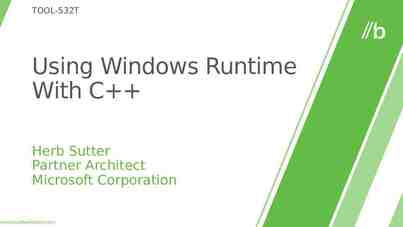McKinney –Vento Homeless Education Homeless Education Program:
27 Slides1.09 MB
McKinney –Vento Homeless Education Homeless Education Program: Data Collection Requirements under the McKinney-Vento Act September 17, 2020
Agenda What is the McKinney-Vento Act? Responsible Parties What data to collect How to submit data Data quality Checklist Once data are submitted New Changes Resources
McKinney-Vento Act WHAT IS THE MCKINNEYVENTO ACT?
Homeless Education Program McKinney-Vento Act Our mission is to ensure that homeless children and youth have equal access to the same free, appropriate public education, including a public preschool education, as provided to other Arizona children and youth.
Arizona Data Number of AZ Homeless Students Enrolled 30,000 25448 25,000 24,393 21062 20,000 15,000 10,000 5,000 0 2 0 SY 16-17 SY17- 18 SY 18--19 SY 19-20
McKinney-Vento Act RESPONSIBLE PARTIES
Federal Requirement Data collection begins at the school and LEA level. Each LEA has a local liaison for homeless education who is responsible for ensuring the identification of homeless students through coordinated activities with other school personnel and community agencies [42 U.S.C. [42 U.S.C. § 11432(g)(6)(A)(i)]. LEA Liaison LEA’s Data staff State Coordinator
Federal Requirements Data collection and analyzing data is importation for the education of homeless children and youth. Federal Reporting Requirement SEA Approval of Student Need per Program Description 2 Compliance with Title 1, Part A MV Subgrant Application Requirement Calculation for the SetAside of Title 1, Part A
Why is Data Collected? Data required at the state, LEA and school/site level Determines the effectiveness of the program Identifies trends Identifies technical assistance Helps determine areas of opportunity . 2
McKinney-Vento Act WHAT DATA IS COLLECTED
What Data Is Collected? The data below must be submitted to ED for each education unit. *The racial/ethnic background of homeless enrolled students (FS C118)
Data Collection Process
Data Quality Notes The number of students experiencing homelessness who were served by McKinney-Vento subgrants, must be reported, regardless of their status as enrolled in school. This count only includes students who are birth to 2 or age 3 to 5, NOT Kindergarten. SERVED is different from enrolled. The definitions of data collection can be found on the ADE-Homeless website. 2
Data Quality Notes Subgroups of students are not exclusive, that is, a homeless student could be part of some, all or none of the subgroup categories. Families or Unaccompanied youth sometime will decline educational services available based on their homeless status. This student should still be included as part of the homeless counts and receipt of educational services is not required and does not impact the student’s status as homeless. 2
Data Quality Notes Primary Nighttime Residence: Nighttime residence data should reflect the type of residence the student was using at the time the student was identified as meeting the homeless definition. Only submit the type of housing when the student was first identified as homeless. Same goes for Unaccompanied youth. Students living in substandard housing should be included in “Unsheltered” category. All students living in a shelter must be coded as “STH”. 2
Collecting Data Collection begins with IDENTIFICATION of students by the schools. Avenues such as office managers, registrars, teachers, cafeteria staff and homeless liaisons. Identify the student as a “Need” in your school data system. That identification must be submitted to AzEDS as ”24-homeless” and “60-Unaccompanied” ( if the student meets that criteria) Young Homeless also has a number for need. Data is submitted to the SEA in late spring or early summer of each year. 2 The greatest threat to data quality is a breakdown in the communication feedback loop between LEA data techs, liaisons, State Coordinators and SEA data staff.
How to Collect Data Questions to ask your local LEA/Charter: Does the district have a data reporting technician? Who is that person or persons? Are there additional data, which the data system is unable to collect, that the liaison is responsible for? What are those data? What is the process for submitting that data? How does the LEA collect and store data? Does it use a web-based or other electronic student information system? Does it rely on spreadsheets? What is the deadline for submitting data to the SEA? Is there an internal deadline for admin to review the data before submitting to SEA? What steps does the LEA take to ensure the data is accurate? Can the LEA correct data that has already been submitted? Are there additional deadlines for corrections? 2
McKinney-Vento Act HOW TO SUBMIT DATA
Data Quality Notes If your ADE school data system does not record children below preschool (any child 0-5), and you have served the child, you will have to submit the data with your numbers to [email protected] by OCTOBER 1st, 2020. LEA Name: Liaison Name: Date submitted: number of children servedto 0-2 yrs Number of children served 3-5 (not enrolled) Example (more information come) 2
McKinney-Vento Act ONCE DATA ARE SUBMITTED
Use of Data The use of data is to collect information on student outcomes is to help the students succeed. Measuring program outcomes: Is your “to-do” list supporting long term program goals?
McKinney-Vento Act NEW IMPLEMENTATIONS
New Implementations for SY 20-21: Check in with your data team quarterly Verify data PRIOR to submission Include race/ethnicity data for homeless students Arizona Homeless Education reporting timeline is: July 1st – June 30th. Upcoming due date for data submission – October 1, 2020 – February 1. 2021 – June 1. 2021
New Implementations for SY 20-21: Different grade levels assigned to the same child by different LEAs the child might attend during that school year. Category “UNKNOWN” is not valid Category “MISSING” is not valid. If there is no data to report in a category, then a “ZERO” must be entered. Categories should not be left blank Year to Year comparisons are not happening. IF your LEA is submitting a large change in their reported numbers of youth, there should be an explanation of the changes (either – or ) to ADE State Coordinator.
McKinney-Vento Act RESOURCES
Data Resources Chapter 13- NCHE Homeless Liaison Toolkit: https://nche.ed.gov/homeless-liaison-t oolkit/ Data Quality Handout 2020: https://www.azed.gov/homeless/profes sional-development-ehcy GAO Glossary for Data Collection: https://www.azed.gov/sites/default/file s/2020/09/common%20vocabulary%20 for%20collaboration%20and%20collecti on%20of%20more%20consistent%20da ta-2010.pdf NCHE Data Collection website: https://nche.ed.gov/data-collection/
Have Questions? Silvia Chavez State Coordinator for Homeless Education [email protected] [email protected] (602)542-4963-Desk www.azed.gov/homeles s
































